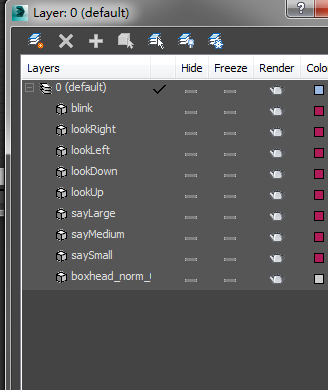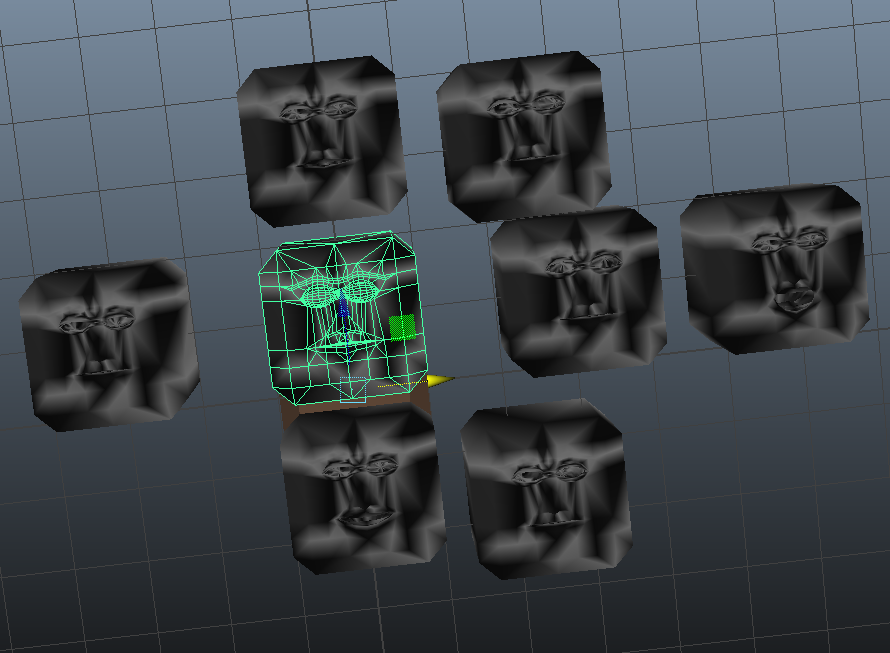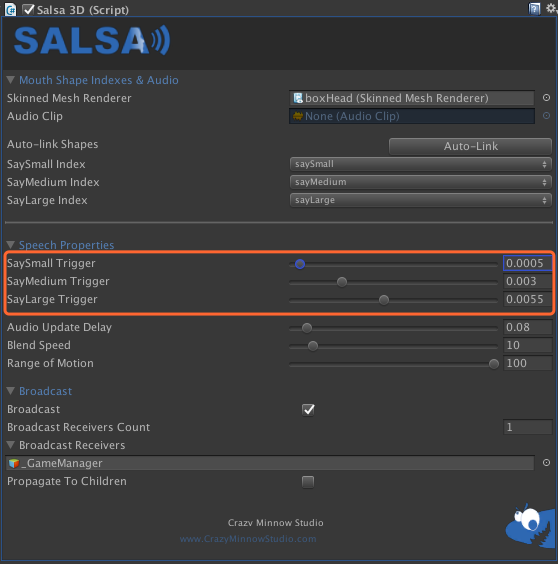1
2
3
4
5
6
7
8
9
10
11
12
13
14
15
16
17
18
19
20
21
22
23
24
25
26
27
28
29
30
31
32
33
34
35
36
37
38
39
40
41
42
43
44
45
46
47
48
49
50
51
52
53
54
55
56
57
| private void Update()
{
if (this.prevIsTalking != this.isTalking)
{
this.prevIsTalking = this.isTalking;
if (this.broadcast)
this.TalkStatusChanged();
}
if ((double) this.average < (double) this.saySmallTrigger)
{
this.say = "Rest";
this.sayIndex = 0;
this.saySmallValue = SalsaUtility.LerpRangeOfMotion(this.saySmallValue, this.blendSpeed, this.rangeOfMotion, SalsaUtility.BlendDirection.Decrement);
this.sayMediumValue = SalsaUtility.LerpRangeOfMotion(this.sayMediumValue, this.blendSpeed, this.rangeOfMotion, SalsaUtility.BlendDirection.Decrement);
this.sayLargeValue = SalsaUtility.LerpRangeOfMotion(this.sayLargeValue, this.blendSpeed, this.rangeOfMotion, SalsaUtility.BlendDirection.Decrement);
}
else if ((double) this.average < (double) this.sayMediumTrigger)
{
this.say = "Small";
this.sayIndex = 1;
this.saySmallValue = SalsaUtility.LerpRangeOfMotion(this.saySmallValue, this.blendSpeed, this.rangeOfMotion, SalsaUtility.BlendDirection.Increment);
this.sayMediumValue = SalsaUtility.LerpRangeOfMotion(this.sayMediumValue, this.blendSpeed, this.rangeOfMotion, SalsaUtility.BlendDirection.Decrement);
this.sayLargeValue = SalsaUtility.LerpRangeOfMotion(this.sayLargeValue, this.blendSpeed, this.rangeOfMotion, SalsaUtility.BlendDirection.Decrement);
}
else if ((double) this.average < (double) this.sayLargeTrigger)
{
this.say = "Medium";
this.sayIndex = 2;
this.saySmallValue = SalsaUtility.LerpRangeOfMotion(this.saySmallValue, this.blendSpeed, this.rangeOfMotion, SalsaUtility.BlendDirection.Decrement);
this.sayMediumValue = SalsaUtility.LerpRangeOfMotion(this.sayMediumValue, this.blendSpeed, this.rangeOfMotion, SalsaUtility.BlendDirection.Increment);
this.sayLargeValue = SalsaUtility.LerpRangeOfMotion(this.sayLargeValue, this.blendSpeed, this.rangeOfMotion, SalsaUtility.BlendDirection.Decrement);
}
else
{
this.say = "Large";
this.sayIndex = 3;
this.saySmallValue = SalsaUtility.LerpRangeOfMotion(this.saySmallValue, this.blendSpeed, this.rangeOfMotion, SalsaUtility.BlendDirection.Decrement);
this.sayMediumValue = SalsaUtility.LerpRangeOfMotion(this.sayMediumValue, this.blendSpeed, this.rangeOfMotion, SalsaUtility.BlendDirection.Decrement);
this.sayLargeValue = SalsaUtility.LerpRangeOfMotion(this.sayLargeValue, this.blendSpeed, this.rangeOfMotion, SalsaUtility.BlendDirection.Increment);
}
this.sayAmount.saySmall = this.saySmallValue;
this.sayAmount.sayMedium = this.sayMediumValue;
this.sayAmount.sayLarge = this.sayLargeValue;
if ((bool) ((Object) this.skinnedMeshRenderer))
{
this.skinnedMeshRenderer.SetBlendShapeWeight(this.saySmallIndex, this.sayAmount.saySmall);
this.skinnedMeshRenderer.SetBlendShapeWeight(this.sayMediumIndex, this.sayAmount.sayMedium);
this.skinnedMeshRenderer.SetBlendShapeWeight(this.sayLargeIndex, this.sayAmount.sayLarge);
}
if (!(bool) ((Object) this.audioSrc))
return;
if (this.audioSrc.isPlaying)
this.isTalking = true;
else
this.isTalking = false;
}
|



